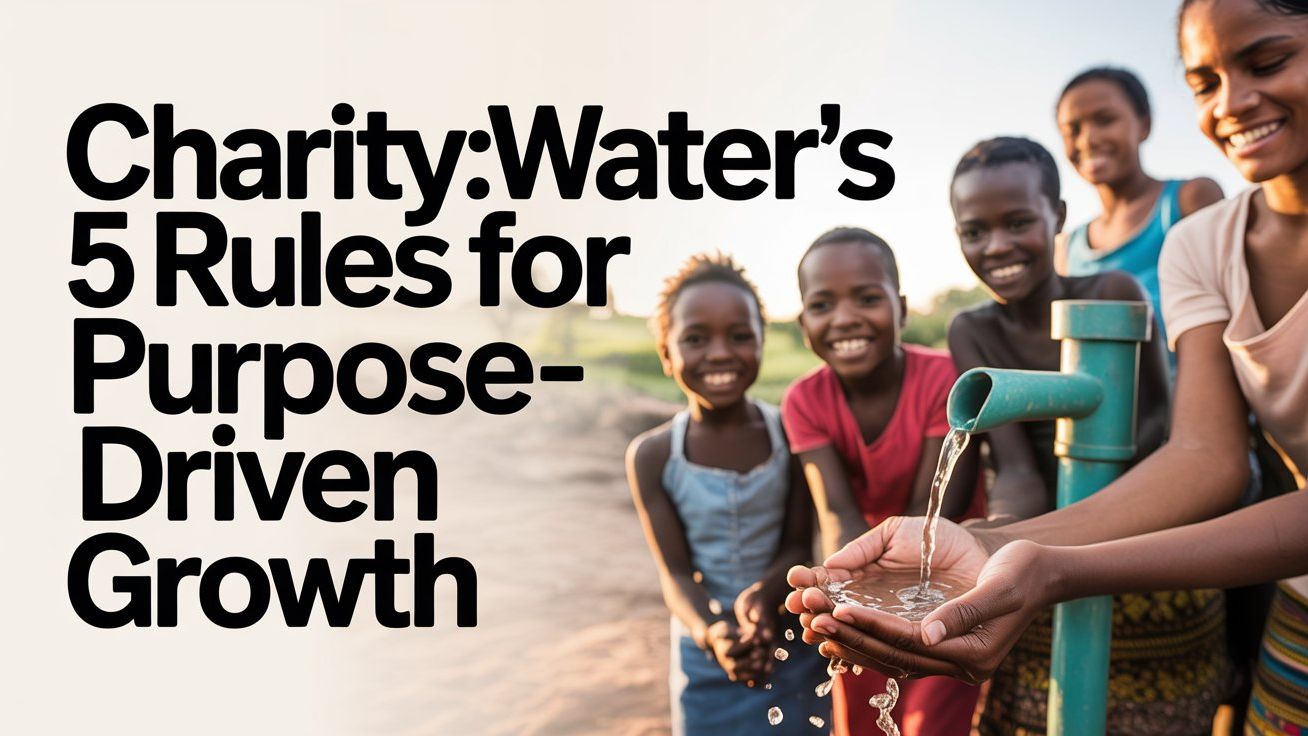
12 Elements All Nonprofit Websites Need Today
Nov 18, 2022It’s tempting to build a website that looks cool, elegant, or trendy.
And, good design is an essential part of any successful website. But..the problem comes when that is the only focus of your website.
What happens is that you end up with a site that looks good but doesn’t actually achieve anything. It’s what we call “style over substance.”
A website needs to be more than just a pretty face. It needs to have a purpose and achieve specific goals. Your website should have a clear, concise message that tells visitors who you are and what you do. It should be easy to understand and free of industry jargon. Otherwise, it’s just a waste of time and money.
To build a truly successful website, you must to start with your goals and objectives.
What do you want your website to achieve?
Some common goals for websites include:
-Generating leads or donations
-Building brand awareness or reputation
-Educating customers or providing information
-Increasing customer loyalty or engagement
Once you know your goals, you can start to create content and design your site in a way that will help you achieve them.
Remember, a successful website is about more than just looks. It’s about achieving specific goals and objectives. So, start by defining what you want your site to achieve, and then work backward from there.
The most productive websites incorporate (A) clear messaging, (B) sound user experience & design, and (C) calls the reader to action.
It doesn’t matter whether you run a nonprofit or a service-based business. If you don’t have those three elements, you run the risk of losing your audience’s attention.
Building a successful website is about more than just having the latest trends and coolest designs.
12 Elements All Nonprofit Websites Need Today
1. Persuasive language
Your website should be full of persuasive language that speaks to your audience’s needs and desires. The audience is the hero, not your organization. One of the biggest mistakes many organizations make is that they do not articulate the problem they solve and frame it from the website visitor's point of view.
Your headlines, subheadings, and body copy should all be geared towards convincing the reader that your offering or programs are the best solution to their problem.
2. Strong visuals
Humans are visual creatures, so it’s important to incorporate strong visuals into your website. This could include photos, videos, infographics, or other forms of visual content.
Make sure that your visuals are high-quality and relevant to your message. They should also be placed strategically throughout your website to help guide the reader’s eye.
3. Clear and easy-to-follow calls to action
Your website should have multiple calls to action (CTAs) throughout.
A CTA is simply a statement or button that encourages the reader to take some kind of action, such as signing up for your email list, downloading a freebie, or making a purchase.
Make sure your CTAs are clear, concise, and impossible to miss. Read that last phrase again. Impossible to miss. Got it?
4. Keep it simple content approaches
When it comes to website design, less is almost always more.
Don’t try to cram too much information onto your website or make your design too complicated. Keep things clean and simple for the best results.
As a general rule of thumb: Clear is better than Clever.
5. Mobile-friendly design
In today’s world, it’s absolutely essential to have a mobile-friendly website.
With the majority of people now accessing the internet from their smartphones, you can’t afford to lose out on those visitors by not having a responsive design. Stop reviewing your own site from your laptop. Get out your phone and browse your site from now on.
6. Powerful testimonials
If you want to establish your authority with your audience, one of the best things you can do is include testimonials from past customers or clients.
These are people who have already had a positive experience with your organization, so their words carry a lot of weight. Make sure to include testimonials that are relevant to your target audience and that address the specific problems they’re facing. This could be for donors or program participants. They each have very different questions about your organization, and testimonials can help overcome any challenges people have in their minds when presented with relevant testimonials.
7. Focus on conversion
Your website should be designed with conversion in mind. Every page should have a business objective. What do you want the visitor to do? If you haven't defined it and worked toward it, how can you expect vistors to "engage" with your site?
Conversion simply refers to the act of getting a website visitor to take the desired action, such as signing up for your email list, scheduling a call, registering for a program, downloading a resource, or filling out a contact form.
To improve conversion rates, you need to focus on creating an optimized user experience. This includes things like making it easy to navigate your website, having persuasive copy, and incorporating strong calls to action.
You should also be constantly testing different elements on your website to see what works best. This could involve A/B testing your headlines, CTA buttons, or even your overall website design.
8. A clear value proposition
Your value proposition is what makes you different from all the other organizations out there.
It’s what sets you apart and tells your audience why they should choose you over anyone else.
Make sure your value proposition is front and center on your website so that everyone who visits knows exactly what you have to offer.
Your competition isn't limited only to other organizations in your niche. It is categorically other cause-driven organizations.
8. Simple and intuitive navigation
Your website should be easy to navigate, with a clear structure and hierarchy.
Your visitors should be able to find what they’re looking for quickly and easily, without getting frustrated.
You should also consider adding a search bar to help visitors find what they need even faster. We live in a search culture today. What is the most popular website? Google. How do people shop on Amazon? Search. What do people do when they go to YouTube? Search.
9. Use of strong branding
Your website is a great opportunity to show off your brand identity.
Use your brand colors, fonts, and logo throughout your site to create a cohesive and professional look. Aesthetics matter. As technology has been democratized and design tools are accessible to more and more organizations of different sizes, consumers expect good design and branding.
Your brand should be evident in everything from your website design to the copy on your pages.
10. SEO optimization
Make sure your website is optimized for search engine ranking by using the right keywords, including ALT tags on images, and creating compelling meta descriptions.
You should also create high-quality content that provides value to your audience, and that is shareable on social media.
11. Up-to-date information
Your website should always be up to date with the latest information about your organization.
This includes things like your contact information, staff bios, program descriptions, and events.
If you have an outdated website, it will reflect poorly on your organization as a whole.
12. Attention to the details
The little things can make a big difference on your website.
Make sure all your links are working, your spelling and grammar are correct, and your design is consistent.
Conclusion
These small details will help create a better overall experience for your visitors.
By following these tips, you can ensure that your website is designed for conversion success. Remember, the goal is to turn your faceless visitors into engaged prospects, so keep that in mind as you work on your site.
If you need help with your website design or conversion strategy, let's talk. We’d be happy to share our A.R.T. of Engagement framework for content marketing to help you create raving fans for your mission.







